Home > Directory Home > Drawing Lessons > How to Draw Caricatures & Cartoon Faces > Figure Drawing and Forshortening and Perspective Techniques
HOW TO DRAW FIGURES AND PEOPLE IN CORRECTION PERSPECTIVE, PROPORTIONS AND USING FORESHORTENING
|
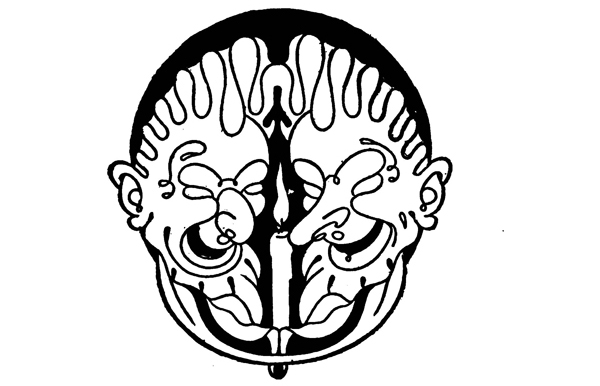
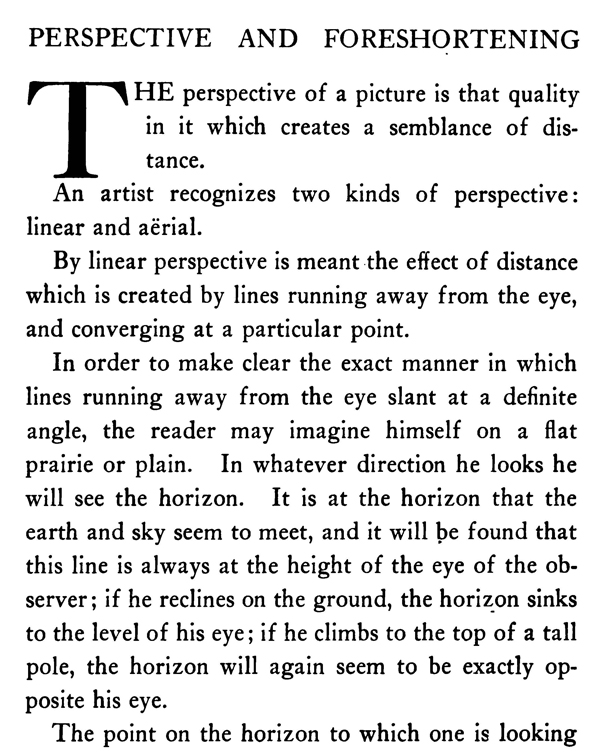
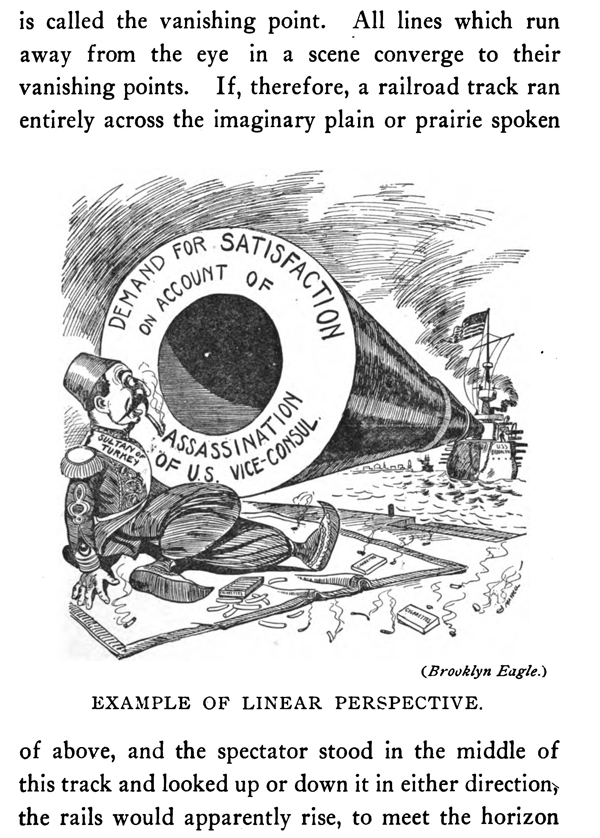
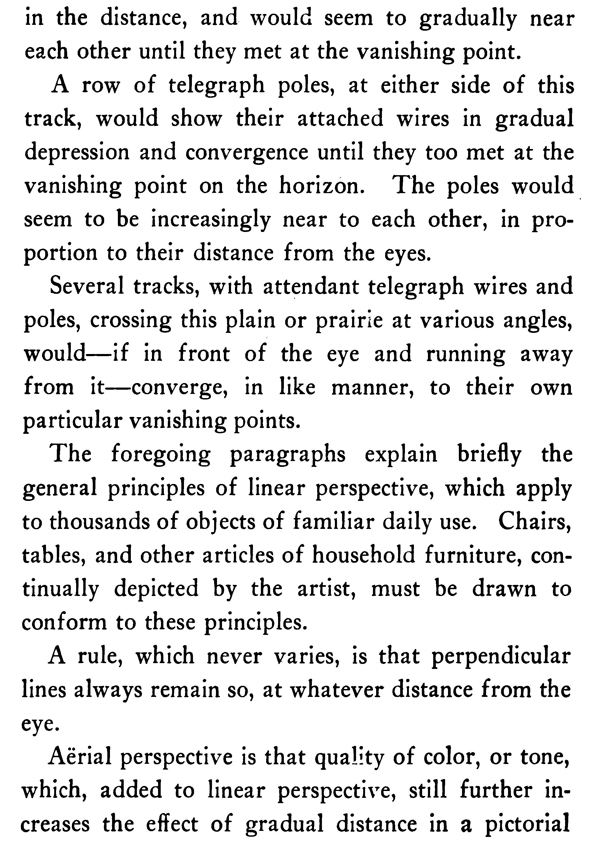
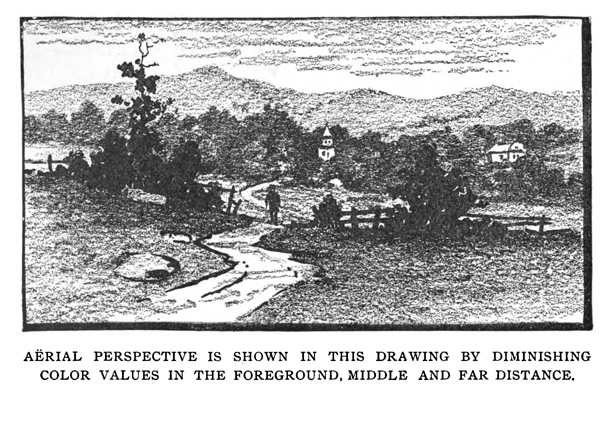
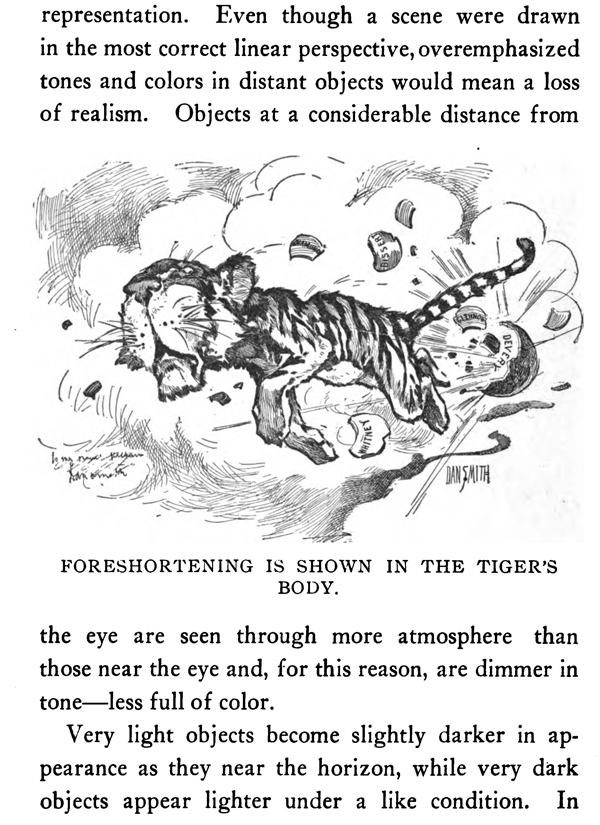
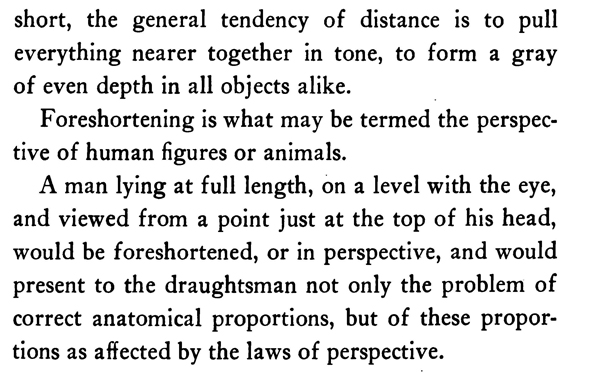
GO BACK TO THE HOME PAGE FOR CARICATURE DRAWING TUTORIALS
[The above words are pictures of text, below is the actual text if you need to copy a paragraph or two]
PERSPECTIVE AND FORESHORTENING
The perspective of a picture is that quality in it which creates a semblance of distance. An artist recognizes two kinds of perspective: linear and aerial. By linear perspective is meant the effect of distance which is created by lines running away from the eye, and converging at a particular point.
In order to make clear the exact manner in which lines running away from the eye slant at a definite angle, the reader may imagine himself on a flat prairie or plain. In whatever direction he looks he will see the horizon. It is at the horizon that the earth and sky seem to meet, and it will be found that this line is always at the height of the eye of the observer; if he reclines on the ground, the horizon sinks to the level of his eye; if he climbs to the top of a tall pole, the horizon will again seem to be exactly opposite his eye.
EXAMPLE OF LINEAR PERSPECTIVE.
The point on the horizon to which one is looking is called the vanishing point. All lines which run away from the eye in a scene converge to their vanishing points. If, therefore, a railroad track ran entirely across the imaginary plain or prairie spoken of above, and the spectator stood in the middle of this track and looked up or down it in either direction, the rails would apparently rise, to meet the horizon in the distance, and would seem to gradually near each other until they met at the vanishing point.
A row of telegraph poles, at either side of this track, would show their attached wires in gradual depression and convergence until they too met at the vanishing point on the horizon. The poles would seem to be increasingly near to each other, in proportion to their distance from the eyes.
Several tracks, with attendant telegraph wires and poles, crossing this plain or prairie at various angles, would—if in front of the eye and running away from it—converge, in like manner, to their own particular vanishing points.The foregoing paragraphs explain briefly the general principles of linear perspective, which apply to thousands of objects of familiar daily use. Chairs, tables, and other articles of household furniture, continually depicted by the artist, must be drawn to conform to these principles.
AERIAL PERSPECTIVE IS SHOWN IN THIS DRAWING BY DIMINISHING COLOR VALUES IN THE FOREGROUND, MIDDLE AND FAR DISTANCE.
A rule, which never varies, is that perpendicular lines always remain so, at whatever distance from the eye. Aerial perspective is that quality of color, or tone, which, added to linear perspective, still further increases the effect of gradual distance in a pictorial representation. Even though a scene were drawn in the most correct linear perspective, overemphasized tones and colors in distant objects would mean a loss of realism. Objects at a considerable distance from the eye are seen through more atmosphere than those near the eye and, for this reason, are dimmer in tone—less full of color. Very light objects become slightly darker in appearance as they near the horizon, while very dark objects appear lighter under a like condition.
In short, the general tendency of distance is to pull everything nearer together in tone, to form a gray of even depth in all objects alike. Foreshortening is what may be termed the perspective of human figures or animals. A man lying at full length, on a level with the eye, and viewed from a point just at the top of his head, would be foreshortened, or in perspective, and would present to the draughtsman not only the problem of correct anatomical proportions, but of these proportions as affected by the laws of perspective.
Privacy Policy .... Contact Us




